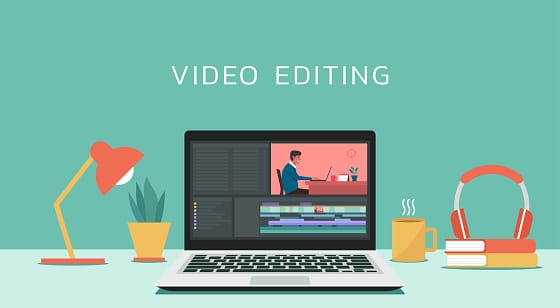Finding the right platform to build your website can be a daunting task. Did you know that Webflow offers better performance optimization compared to WordPress right out of the box?
This article will dive into an in-depth comparison between these two popular platforms, helping you decide which one is best suited for your needs.
Key Takeaways
- Webflow offers better performance optimization out of the box compared to WordPress.
- WordPress provides a wide array of features, themes, plugins, and integrations for flexibility and customization options.
- Both Webflow and WordPress offer e-commerce functionality, but Webflow’s all-in-one platform may be easier for non-experts to use compared to WordPress’s various options.
- Webflow has a user-friendly interface with drag-and-drop functionality, while WordPress has a steeper learning curve and requires more technical knowledge.
- Webflow allows users to create custom animations and interactions without coding through its visual interface, while WordPress relies on plugins for similar functionalities.
- When it comes to CMS content design, Webflow offers modern visual editing capabilities while WordPress provides flexibility through themes and plugins.
- Consider factors like ease of setup, cost, accessibility for non – developers, hosting a blog, customization options,
What is WordPress????

WordPress is a popular website management software that offers various features, themes and templates, plugins and extensions, as well as integrations with third-party services.
Features
WordPress has a lot of features. Let’s look at them:
- WordPress is easy to set up and manage.
- It has many themes for you to choose from.
- You can use plugins to do more things on your website.
- It works well with other services that you may use.
- WordPress is good for setting up an online shop.
Themes and templates
WordPress gives you a lot of choices in themes and templates. You can make your website look the way you want with these options:
- WordPress has thousands of free themes.
- There are also paid themes that give more features.
- Themes can be changed easily if you want a new look.
- Each theme can be customized to suit your needs.
- Many themes are designed for specific types of websites, like blogs or e-commerce sites.
- Some themes come with built-in plugins and extensions for added functionality.
- WordPress lets you add custom CSS to your theme for even more control over the design.
Plugins and extensions
WordPress gives you extra tools. These are called plugins and extensions. They help make your site better. You can add new features with them. There are many to pick from. This lets you do more with your site. Here’s a list of some WordPress plugins and extensions:
- Yoast SEO: Helps with search engine optimization.
- Jetpack: Offers safety, speed, and website growth tools.
- WooCommerce: Turns a site into an online shop.
- WPForms: Lets users make contact forms.
- Wordfence Security: Keeps the site safe from hacks.
- MonsterInsights: Gives insights about who visits the site.
- UpdraftPlus: Backs up your website data.
- WP-Optimize: Keeps your website running fast.
Integrations with third-party services
WordPress offers seamless integrations with a wide range of third-party services, making it highly versatile and expandable. Here are some key integrations you can leverage:
| Integration Type | Description | Examples |
|---|---|---|
| E-commerce Platforms | Integrate e-commerce platforms for online stores. | WooCommerce, Shopify, BigCommerce |
| Payment Gateways | Seamless payment acceptance on your website. | PayPal, Stripe, Square, Authorize.net |
| Email Marketing Services | Manage and grow your email subscriber list. | Mailchimp, Constant Contact, AWeber |
| Social Media Networks | Connect for social sharing and cross-promotion. | Facebook, Twitter, Instagram, LinkedIn |
| Customer Relationship Management (CRM) | Enhance lead management and customer engagement. | Salesforce, HubSpot |
| Analytics Tools | Track and analyze website performance. | Google Analytics, Adobe Analytics |
| SEO Plugins | Optimize website for search engine visibility. | Yoast SEO, All in One SEO Pack |
E-commerce functionality
Webflow and WordPress both offer e-commerce functionality for building online stores. With Webflow, you can create custom sites with a visual website design that includes customizable templates and an integrated e-commerce platform.
On the other hand, WordPress provides various plugins and extensions specifically designed to enhance your online store’s functionality. It allows you to choose from different e-commerce themes and offers WooCommerce, a popular plugin for managing products, payments, shipping, and more.
Both platforms provide options to set up an online store; however, Webflow’s all-in-one platform may be easier for non-experts to use compared to the wide array of options offered by WordPress.
What is Webflow????
Webflow is a web design and development tool that offers ease of use, custom animations and interactions, and CMS content design capabilities.
Ease of use
Webflow and WordPress offer different levels of ease of use for building websites. Webflow is known for its user-friendly interface and drag-and-drop functionality, making it easy for non-experts to create custom sites visually.
On the other hand, WordPress has a steeper learning curve and requires more technical knowledge to set up and customize a website. While Webflow provides an all-in-one platform with built-in SEO controls and performance optimization, WordPress offers a wide array of options through themes and plugins that may be overwhelming for some users.
So, if you’re looking for simplicity and visual design capabilities without sacrificing functionality, Webflow might be the better choice for you.
Custom animations and interactions
Webflow and WordPress both offer features for creating custom animations and interactions on your website. Here are some key points to consider:
| Platform | Features | Customization & Control | Additional Notes |
|---|---|---|---|
| Webflow | Visual interface for animations on elements like buttons, text, images, etc. | Full control over animation timing and behavior. Ability to create complex interactions. | Enhances user experience with dynamic animations and interactions. |
| WordPress | Tools and plugins for animations on website elements. | Various plugins like Animate It!, WP Animation CSS3 Effects, and ScrollMe. Customization may be more limited. | Plugins typically offer pre-defined animation styles. |
CMS content design
CMS content design is an important aspect of building a website, and both Webflow and WordPress offer different approaches. With Webflow, you can create visually stunning and highly customized sites using its modern visual editing capabilities.
It allows for drag-and-drop customization of your website’s layout, fonts, colors, and more. On the other hand, WordPress offers flexibility in terms of themes and plugins that can be used to design your site’s content.
You can choose from a wide range of pre-designed templates or create your own custom designs using WordPress’s CMS platform. Whether you prioritize visual customization or flexibility in content design will depend on your specific needs and preferences when choosing between Webflow and WordPress to build your website.
Webflow vs WordPress: A Comparison Overview
In this section, we will compare Webflow and WordPress in terms of ease of setup, cost, accessibility for non-developers, hosting a blog, customer support, collaboration with external designers, and catering to marketing teams.
| Criteria | Webflow | WordPress |
|---|---|---|
| Ease of setup | Quick and easy setup with single click launch. | Requires more manual effort and technical know-how. |
| Cost | Visual editing interface with built-in SEO controls and a secure platform. | Open-source and free, but costs for hosting, themes, and plugins may apply. |
| Accessibility for non-developers | Intuitive interface with drag-and-drop builder; No coding needed. | May require technical expertise for advanced features. |
| Hosting a blog | Email tickets, live chat, help centre, and community forum. | Robust blogging platform with a wide range of themes and plugins. |
| Customer support | Email tickets, live chat, help center, and community forum. | Large user community, forums, and third-party support services. |
| Collaboration with external designers | Invite designers directly to the design editor. | Options to hire designers for custom themes or modifications. |
| Catering to marketing teams | Built-in SEO controls and modern visual editing. | Wide range of plugins and integrations for e-commerce, social media, and more. |
Ease of setup
Setting up a website can be a breeze with Webflow. It offers a quick and easy website setup, allowing even non-experts to build their own sites effortlessly. On the other hand, WordPress requires more manual effort to get your site up and running smoothly.
With Webflow, you can launch your custom site with just a single click, while WordPress may require more time and technical know-how to set everything up just right. So if you’re looking for an easy and hassle-free setup process, Webflow might be the better choice for you.
Cost
Webflow and WordPress have different pricing structures. With Webflow, you have the option of a free plan, which limits certain features and includes Webflow branding on your site.
They also offer paid plans starting at $12 per month for individuals and $35 per month for businesses. On the other hand, WordPress is open-source software that can be downloaded and used for free.
However, you will need to pay for web hosting and may incur additional costs if you decide to purchase premium themes or plugins. It’s important to consider your budget when choosing between these two platforms, as well as the specific features and functionality that are important to you in building your website.
Accessibility for non-developers
Webflow offers accessibility for non-developers, making it a compelling alternative to WordPress. With Webflow’s easy-to-use interface, you don’t need coding skills to build and customize your website.
You can create visually stunning sites with custom animations and interactions, without the need for complex code. This means that even if you’re not a developer or have limited technical knowledge, you can still create professional-looking websites using Webflow’s intuitive drag-and-drop builder.
In contrast, WordPress may require more technical expertise to fully leverage its capabilities. So if you’re looking for a user-friendly option that empowers non-developers to design their own websites, Webflow is worth considering.
Hosting a blog
When it comes to hosting a blog, both Webflow and WordPress offer their own advantages. With WordPress, you have the option to choose from a wide range of blogging themes and plugins that can enhance your website’s functionality.
It is known for its robust blogging platform and has been used by many bloggers for years. On the other hand, Webflow provides a modern visual editing interface that allows users to easily customize their blogs without any coding knowledge.
It also offers built-in SEO controls, ensuring that your blog is optimized for search engines. Additionally, Webflow’s secure platform provides peace of mind when it comes to managing your blog’s security.
Customer support
When it comes to customer support, both Webflow and WordPress offer reliable options. Webflow provides support through email tickets and live chat during business hours. They also have a comprehensive help center with tutorials, videos, and an active community forum where users can find answers to their questions.
On the other hand, WordPress has a large user community with many forums and resources available for troubleshooting. Additionally, there are numerous third-party companies that specialize in providing WordPress support services.
So whether you choose Webflow or WordPress, you can expect to receive assistance when needed.
Collaboration with external designers
Webflow and WordPress have different approaches when it comes to collaborating with external designers. With Webflow, you can easily invite designers to work on your website project by granting them access to the design editor.
They can make changes directly in the visual interface, which makes collaboration seamless and efficient. On the other hand, WordPress offers various options for working with external designers.
You can hire a designer to create a custom theme or modify an existing one. Designers can also collaborate using tools like Photoshop or Sketch and then integrate their designs into WordPress through coding or using page builder plugins.
Catering to marketing teams
Webflow and WordPress both offer features that cater to marketing teams. In Webflow, users have access to built-in SEO controls, making it easier to optimize their websites for search engines.
This means that marketing teams can focus on creating content and strategies rather than spending time on manual optimization tasks. Additionally, Webflow provides modern visual editing capabilities, allowing marketers to create highly customized sites with engaging animations and interactions.
On the other hand, WordPress offers a wide range of plugins and integrations that enable marketing teams to enhance their websites with e-commerce functionality, social media integration, lead capture forms, analytics tools, and more.
Which Should You Choose?
When deciding between Webflow and WordPress, consider your specific needs. If you prioritize ease of use, custom animations, and CMS content design, Webflow may be the better choice.
On the other hand, if you value a vast selection of themes and plugins, strong e-commerce functionality, and accessibility for non-developers, WordPress might be the right fit for you.
When to choose Webflow
Webflow is the right choice when you want a website builder that offers quick and easy setup. It’s perfect for non-expert builders who want an all-in-one solution for their websites.
With Webflow, you can create fully customized sites visually, without needing to write any code. It also provides built-in SEO controls and ensures high-performance optimization without any manual effort.
On top of that, Webflow has strong security features to keep your website secure. Plus, its pricing structure is different from other website builders like WordPress or Wix, allowing you to choose the plan that best suits your needs. Consider this article about best practices to design high converting websites with webflow.
When to choose WordPress
WordPress is a great choice when you want more flexibility and options for your website. It allows you to choose from a wide variety of themes and templates, so you can customize the design according to your needs.
With its extensive collection of plugins and extensions, you can add additional functionality to your site, such as contact forms or e-commerce features. WordPress also integrates well with third-party services, making it easier to connect with other tools and platforms.
If you’re looking for a blogging platform, WordPress is known for its powerful blogging capabilities too.
Conclusion
In conclusion, when deciding between Webflow and WordPress to build your website, it ultimately comes down to your specific needs and level of expertise. If you’re a non-expert looking for an easy-to-use platform with performance optimization and modern design capabilities, Webflow is a great choice.
On the other hand, if you prefer flexibility with themes and plugins or have experience with WordPress, then it’s still a reliable option. Consider factors like ease of setup, cost, customization options, and support before making your decision.
Choose the platform that aligns best with your goals and resources for building a successful website.
FAQs
1. What is the difference between Webflow and WordPress?
Webflow is a visual website builder that offers more design flexibility, while WordPress is a content management system (CMS) with a wider range of plugins and themes for customization.
2. Which platform is easier to use, Webflow or WordPress?
Webflow is generally considered easier to use for beginners as it has a drag-and-drop interface and visual editor, whereas WordPress requires more technical knowledge for setup and customization.
3. Can I migrate my existing website from WordPress to Webflow?
Yes, you can migrate your existing website from WordPress to Webflow, but it may require some manual effort in transferring content and recreating the design/layout using Webflow’s tools.
4. Which platform is better for SEO purposes, Webflow or WordPress?
Both platforms can be optimized for SEO (search engine optimization). However, WordPress has more comprehensive SEO plugins available, making it slightly more flexible in terms of optimizing your site’s SEO performance.
5. Does Webflow or WordPress offer better e-commerce functionality?
WordPress has more robust e-commerce capabilities through plugins such as WooCommerce, making it a better choice if you plan on building an online store. While Webflow does offer limited e-commerce functionality without relying on external integrations/plugins.




